Dacia Jogger vs Fiat Tipo Wagon – Performance, range & efficiency compared
Two cars, one duel: Dacia Jogger meets Fiat Tipo Wagon.
Which one wins in performance, efficiency and value for money? Find out now!
Costs and Efficiency:
Price and efficiency are often the first things buyers look at. Here it becomes clear which model has the long-term edge – whether at the pump, the plug, or in purchase price.
Dacia Jogger has a clearly perceptible advantage in terms of price – it starts at 15400 £, while the Fiat Tipo Wagon costs 21000 £. That’s a price difference of around 5571 £.
Both cars consume an average of 4.70 L per 100 km – no difference here.
Engine and Performance:
Power, torque and acceleration are the classic benchmarks for car enthusiasts – and here, some clear differences start to show.
When it comes to engine power, the Dacia Jogger has a barely noticeable edge – offering 140 HP compared to 130 HP. That’s roughly 10 HP more horsepower.
In acceleration from 0 to 100 km/h, the Fiat Tipo Wagon is barely noticeable quicker – completing the sprint in 9.10 s, while the Dacia Jogger takes 9.80 s. That’s about 0.70 s faster.
In terms of top speed, the Fiat Tipo Wagon performs a bit better – reaching 207 km/h, while the Dacia Jogger tops out at 174 km/h. The difference is around 33 km/h.
There’s also a difference in torque: Fiat Tipo Wagon pulls noticeable stronger with 320 Nm compared to 200 Nm. That’s about 120 Nm difference.
Space and Everyday Use:
Beyond pure performance, interior space and usability matter most in daily life. This is where you see which car is more practical and versatile.
Seats: Dacia Jogger offers noticeable more seating capacity – 7 vs 5.
In curb weight, Dacia Jogger is slightly lighter – 1251 kg compared to 1455 kg. The difference is around 204 kg.
In terms of boot space, the Dacia Jogger offers slight more room – 607 L compared to 550 L. That’s a difference of about 57 L.
When it comes to payload, Dacia Jogger to a small extent takes the win – 582 kg compared to 475 kg. That’s a difference of about 107 kg.
Who wins the race?
The Dacia Jogger proves to be outperforms in nearly all aspects and therefore becomes our DriveDuel Champion!
Dacia Jogger is the better all-rounder in this comparison.
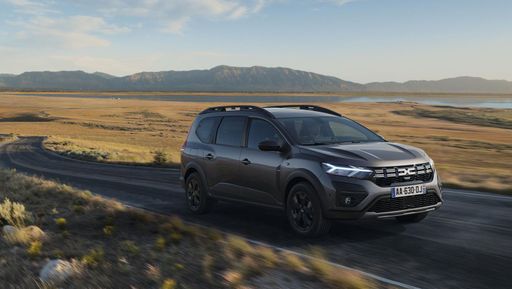
Dacia Jogger
Dacia Jogger
The Dacia Jogger offers a spacious and versatile interior, making it an excellent choice for families seeking practicality and comfort. Its design combines the robustness of an SUV with the functionality of an estate, providing a reliable option for various driving needs. With a focus on affordability, the Jogger ensures that essential features are accessible without compromising on quality.
details @ dacia-presse.de
@ dacia-presse.de
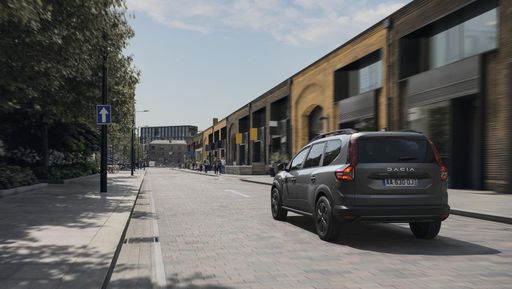 @ dacia-presse.de
@ dacia-presse.de
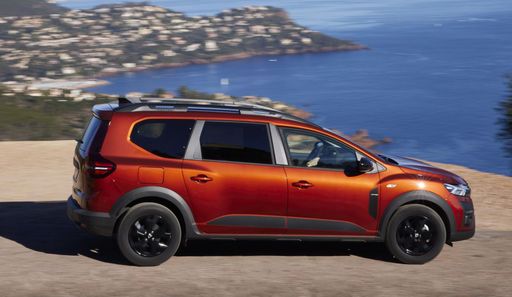 @ dacia-presse.de
@ dacia-presse.de
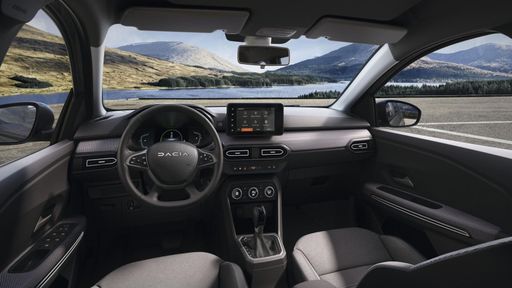 @ dacia-presse.de
@ dacia-presse.de
Fiat Tipo Wagon
The Fiat Tipo Station Wagon offers a spacious and practical solution for families seeking value without sacrificing comfort. Its sleek design and modern interior features create a pleasant driving experience, complemented by a range of user-friendly technology. On the road, the Tipo Estate provides a smooth drive, making it an ideal companion for both urban and longer journeys.
details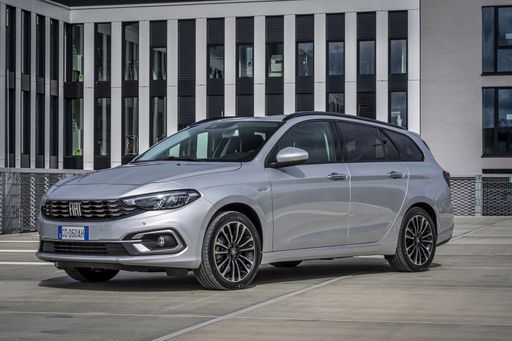 @ media.stellantis.com
@ media.stellantis.com
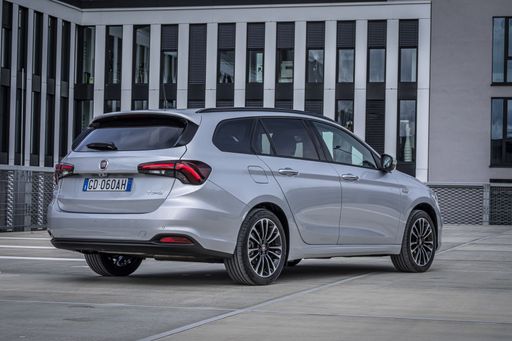 @ media.stellantis.com
@ media.stellantis.com
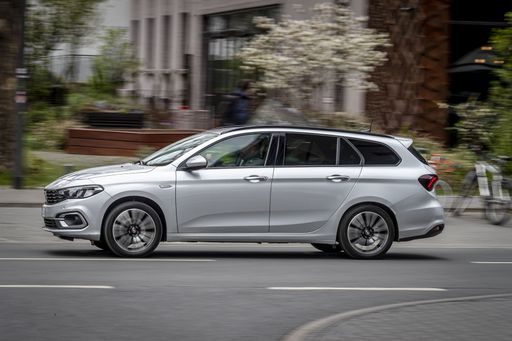 @ media.stellantis.com
@ media.stellantis.com

|

|
|
|
|
Costs and Consumption |
|
|---|---|
|
Price
15400 - 23400 £
|
Price
21000 - 27000 £
|
|
Consumption L/100km
4.7 - 7.8 L
|
Consumption L/100km
4.7 - 5.4 L
|
|
Consumption kWh/100km
-
|
Consumption kWh/100km
-
|
|
Electric Range
-
|
Electric Range
-
|
|
Battery Capacity
0.60 kWh
|
Battery Capacity
-
|
|
co2
105 - 137 g/km
|
co2
122 - 125 g/km
|
|
Fuel tank capacity
40 - 50 L
|
Fuel tank capacity
50 L
|
Dimensions and Body |
|
|---|---|
|
Body Type
MPV
|
Body Type
Estate
|
|
Seats
5 - 7
|
Seats
5
|
|
Doors
5
|
Doors
5
|
|
Curb weight
1251 - 1460 kg
|
Curb weight
1455 - 1470 kg
|
|
Trunk capacity
160 - 607 L
|
Trunk capacity
550 L
|
|
Length
4547 mm
|
Length
4571 mm
|
|
Width
1784 mm
|
Width
1792 mm
|
|
Height
1674 mm
|
Height
1514 mm
|
|
Max trunk capacity
1807 - 1819 L
|
Max trunk capacity
-
|
|
Payload
393 - 582 kg
|
Payload
475 kg
|
Engine and Performance |
|
|---|---|
|
Engine Type
Full Hybrid, LPG, Petrol
|
Engine Type
Petrol MHEV, Diesel
|
|
Transmission
Automatic, Manuel
|
Transmission
Automatic, Manuel
|
|
Transmission Detail
Automatic Gearbox, Manual Gearbox
|
Transmission Detail
Dual-Clutch Automatic, Manual Gearbox
|
|
Drive Type
Front-Wheel Drive
|
Drive Type
Front-Wheel Drive
|
|
Power HP
91 - 140 HP
|
Power HP
130 HP
|
|
Acceleration 0-100km/h
9.8 - 13.2 s
|
Acceleration 0-100km/h
9.1 - 10.1 s
|
|
Max Speed
167 - 174 km/h
|
Max Speed
206 - 207 km/h
|
|
Torque
160 - 200 Nm
|
Torque
240 - 320 Nm
|
|
Number of Cylinders
3 - 4
|
Number of Cylinders
4
|
|
Power kW
67 - 103 kW
|
Power kW
96 kW
|
|
Engine capacity
999 - 1598 cm3
|
Engine capacity
1469 - 1598 cm3
|
General |
|
|---|---|
|
Model Year
2024 - 2025
|
Model Year
2024
|
|
CO2 Efficiency Class
C, D
|
CO2 Efficiency Class
D
|
|
Brand
Dacia
|
Brand
Fiat
|
What drivetrain options does the Dacia Jogger have?
The Dacia Jogger is offered with Front-Wheel Drive.
The prices and data displayed are estimates based on German list prices and may vary by country. This information is not legally binding.
